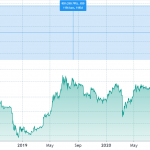MIT’s Computer Science and Artificial Intelligence Lab has figured out a way of measuring walking speed to within 95 and 99 percent accuracy – all without requiring a wearable or other on-body measurement device. The tech uses wireless signals, dubbed “WiGait” by the research team, sent out by a router-like devices within the home to track walking speed and stride length over time.
The WiGait system is designed for use in-home, where it can be set up in an unobtrusive location, regularly taking measurements of a user’s walking pace and gait without actually requiring them to remember to put on a wristband or charge a device. The ability to track walking speed over time is a huge boon to clinical research, since a growing body of evidence suggests it’s a great indicator for helping to predict health issues, and the ability to identify changes in stride length, too, can help better understand certain conditions like Parkinson’s.
WiGait is better than a number of other solutions because it doesn’t require on-body equipment, and it also isn’t as invasive as cameras, which can also be used to capture and measure stride length and speed, but which also come with a whole host of privacy concerns. A patient is more likely to feel comfortable with a sensor that doesn’t capture footage, and even the difference between seeing a camera and seeing a non-descript antenna mounted to a wall is bound to have advantages from a patient’s perspective.
This development could have big therapeutic potential in long-term care and geriatric medical treatment, a growing field of interest given extended human lifespans and aging populations worldwide. The best part is that it’s zero friction in terms of patient compliance once set up, which is very hard to achieve with any wearable devices.














